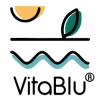The Olive Oil Fraud: How Consumers Are Deceived and Why Ours Is Different
Olive oil is a staple in global gastronomy and a cornerstone of the Mediterranean diet. However, what many consumers don’t know is that a significant portion of olive oils sold as “pure” and “organic” are actually adulterated. Many brands mix high-quality olive oil with cheaper alternatives, use artificial coloring, and misleadingly label their products. In […]




